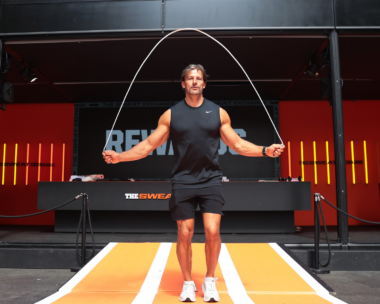Which workout will give you the best results in the shortest amount of time? It all depends on your body type. Exercise physiologist and nutritionist Kathleen Alleaume reveals the right fitness level for your body type.
There are a number of different body types and you can thank (or blame) your parents for the genetics you have inherited. Although you can’t change your height or bone structure, you can certainly change your body shape (fat versus muscle) with the right exercise and eating habits.
As soon as you adjust your fitness routine according to your build and metabolism, you will achieve success more easily and faster than ever before.
If you don’t feel you fit exclusively into one category, opt for the body type that best describes most of your characteristics. This guide to body types is a helpful place to start but remember, no matter what category you fit into, your first concern should be health.
People who are inactive, overweight or have any medical problems may need a clearance from their doctor before embarking on any new exercise program. If you have any doubts or concerns, see your GP or exercise physiologist for individualised advice.
In pictures: Gym habits that are holding you back
Which body type are you?
While we’re all individuals, most of us fall into one of three basic categories: endomorph, mesomorph and ectomorph. Don’t be dazzled by these scientific terms. Working out which group you fit into and knowing the most effective exercise for that body type will give you the best chance of reshaping your body.
Ectomorphs tend to be thin, long-limbed and typically described as the “ruler” shape. They are usually tall in stature, with a long, slender neck. And due to their super fast metabolism, they carry very low levels of body fat, but have poor muscle definition compared to mesomorphs (below).
Mesomorphs tend to be the best body types for controlling weight. Typically referred to as the “hourglass” shape, mesomorphs have broad shoulders with a narrow waist and have a muscular physique enabling them to lose weight more easily than endomorphs (below).
Endomorphs are generally shaped like “apples” or “pears” and carry more body fat relative to muscle. They tend to have a round, chubby face and usually struggle to control their weight, due to a slower metabolic rate than other body types.
How to exercise
Ectomorphs
Since ectomorphs burn kilojoules very quickly and tend to want to gain weight, their fitness routines will differ. Good exercise for ectomorphs includes intense weight training workouts that will tire the muscles and build them up. Weight training is also good for building bone density, which is important for women, whose bones are prone to osteoporosis. Cardiovascular exercise is still important for general health and wellbeing.
Weight training: Three times per week, targeting the upper and lower body. Perform moderate to heavy weights with a low number of repetitions (2 x 8 repetitions), as too much activity will burn lots of kilojoules. The goal should be to try to build muscle, rather than waste kilojoules minimising what muscle tissue you already have.
Cardio: Thirty minutes, three times per week, of low-to-moderate intensity aerobic activity, such as brisk walking and swimming. Swimming is highly recommended because the water provides resistance, which is great for muscle toning.
Mesomorphs
Strength training: Yoga or Pilates, three times per week, provides muscular conditioning in a routine more likely to develop muscle tone, not size. This type of exercise will ensure a good balance between the upper and lower body, and encourage balance, stretching and flexibility.
Cardio: Circuit training (moving quickly from one exercise to the next without a break), one or two times per week, promotes strength and stamina without building bulk. Other options include boot camp, spin and step classes.
Endomorphs
Endomorphs usually carry extra fat around the lower abdomen, hips and thighs, so the key is to start with a program that burns kilojoules. Many endomorphs avoid weight training because they don’t want to bulk up. You should not avoid weights! Since building lean muscle also burns fat, endomorphs should also include weight training in their fitness plans to give their metabolism an extra boost at the same time.
Related: Women march for a better life
Weight training: Once or twice per week of moderate weight training, using the whole body. Use light to moderate exercises, with lots of repetitions, at a slow pace (3 x 15 repetitions) to burn extra kilojoules. To improve body symmetry, you may want to double up on upper-body exercises. For example, push-ups, pull-downs and chin-ups.
Cardio: Thirty to 60 minutes of cardio work, three to six times per week, for maximum fat and kilojoule burn. Your cardio workouts should generally be done at a moderately intense level, such as brisk walking (adding hills), elliptical training, stair climbing, jogging and incline walking. Be sure to choose a safe exercise as the extra weight can cause increased pressure on joints and bones, so it is important to avoid engaging in exercises that can add stress to these areas. Also, increase incidental exercise levels by walking (instead of driving) and taking the stairs (instead of lifts or escalators). The goal should be to burn as many kilojoules as possible.
What about diet?
Ectomorphs: Lucky you! Due to an extra fast metabolism, you actually need to eat more kilojoules than people with other body types, especially if you’re trying to build muscle. Don’t get too carried away, though, thinking you can eat whatever you want – making healthy choices is still important. Focus on complex carbohydrates, such as multi-grain breads, pasta and whole grains, fruit and vegetables. It’s best to eat often and snack on kilojoule-dense foods, such as nuts and dried fruit.
Mesomorphs: If your goal is to put on muscle, you need to consume an excess of both complex carbohydrates and protein. If you consume too many kilojoules and don’t exercise, you will put on extra fat. Aim for lean protein, such as turkey, chicken, low-fat dairy, fish and legumes, and opt for carbohydrates with a low-glycaemic index (slow-digesting), such as grainy breads, brown rice and noodles, and include healthy fats from raw nuts, olive oil, flaxseed oil and avocados.
Endomorphs: If you eat more kilojoules than you need to maintain your current weight, your body will store those extra kilojoules as fat. So, you should try to lower your total kilojoule intake by eating five or six mini-meals per day (this also helps stave off hunger). Never wait until you’re hungry to eat and never eat until full. Instead, load up on high-fibre, low-glycaemic index carbohydrates, such as fruit, vegetables, wholegrain breads, pastas and brown rice, to keep you satisfied for longer. Avoid sugar, processed food and junk food entirely. Drink enough water to stay properly hydrated. Also eat as much lean protein as possible, avoiding fatty meats and alcohol, which are high in kilojoules.
Your say: Which body type are you? How do you keep in shape?
Video: Best diet phone apps




